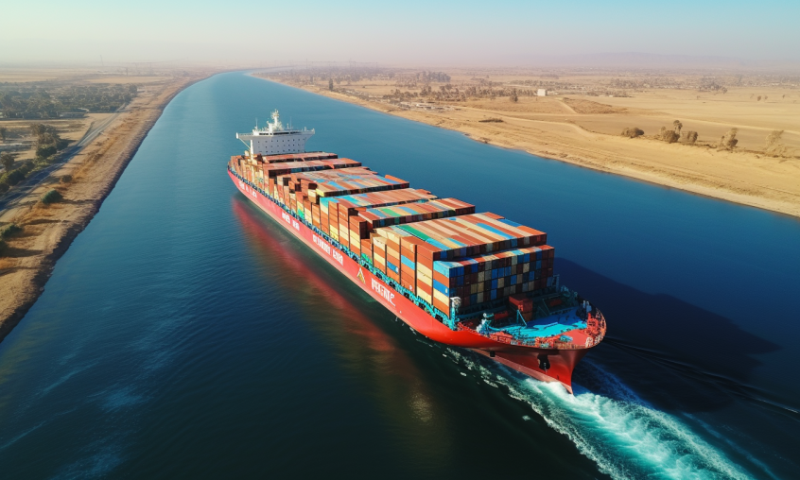Ocean shipping lines are not expected to make a quick return to the Suez Canal after Houthi militia announced an end to attacks.
Since 2024, the air cargo industry has benefited from container shipping lines needing to sail around the southern tip of Africa on their way to Europe, rather than through the Suez Canal, which has extended transit times from Asia by weeks.
Industry commentators have warned that when shipping lines return to the Suez Canal route, volumes are likely to shift back to ocean shipping, hitting growth expectations.
However, market analyst Xeneta has said that ocean shipping is likely to only slowly shift back to the Suez Canal for a number of reasons, which should at least avoid any sudden shocks for air cargo.
Peter Sand, chief analyst at Xeneta, explained that crew safety would be the number one concern for ocean shipping lines.
“Details are sketchy and you cannot base the safety of crews, ships and cargo on the word of Houthi militia,” said Sand. “Carriers need far more assurance than that and, perhaps more importantly, so do insurance companies.
“Different carriers have different tolerances to risk and we have seen some intermittently testing the water, with the CMA CGM Zheng He and CMA CGM Benjamin Franklin making voyages through the region in November, but generally the number of container ships transiting the Suez Canal has been trending downwards during 2025. Transits may start to increase if there is a perceived lower risk, but we are unlikely to see an imminent return to 2023 levels.”
A return to the Suez Canal route could also release a flood of capacity back into the market and cause “freight rates to plummet” which could in turn cause disruption as shipping lines take urgent actions, such as suddenly cancelling sailings and slowing down ship speeds, to correct the situation.
“Average spot rates from Far East to North Europe, Mediterranean and US East Coast – three trades that would ordinarily transit the Red Sea – are all down more than 50% since the start of year,” said Sand.
“A large-scale return of container ships to the Red Sea would flood the market with capacity and cause freight rates to plunge even lower across trades at a global level.
“Carriers are already heading into loss-making territory and freight rates are expected to fall up to -25% globally in 2026, even with no change to the situation in the Red Sea.
“Shippers should be making contingency plans because a large-scale return would cause severe disruption across global ocean supply chains as services transiting Suez Canal are reinstated.
“There are still many questions to be answered, but the impact of a large-scale return would be seismic for shippers and carriers.”
Speaking at the TIACA Air Cargo Forum event in Abu Dhabi, Ryan Keyrouse, chief executive of consultant Rotate, warned that an improvement in ocean shipping reliability would likely result in modal shift from air.

